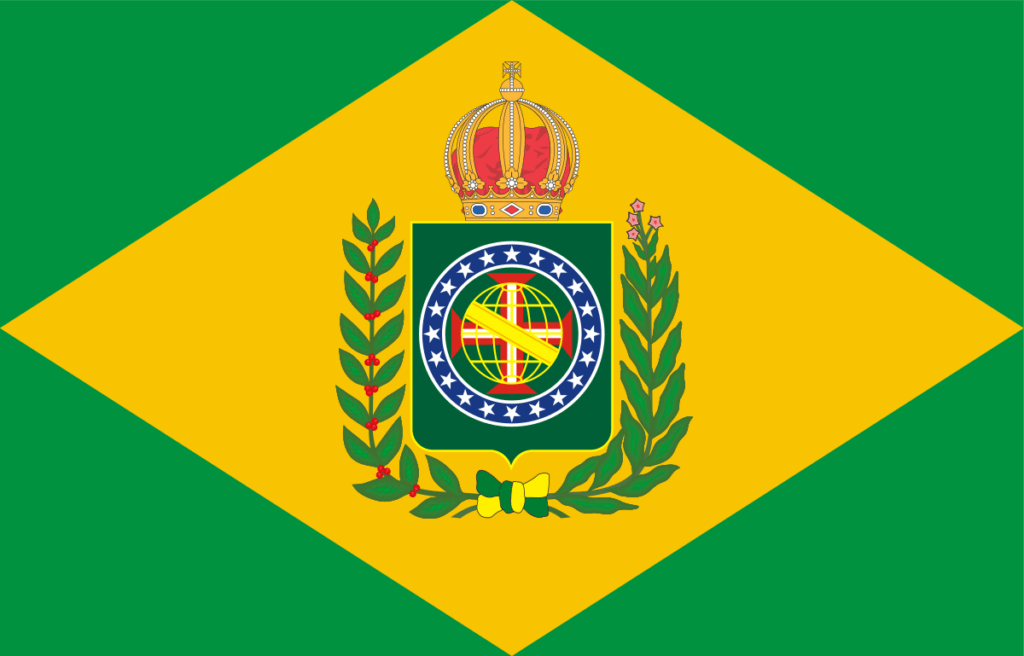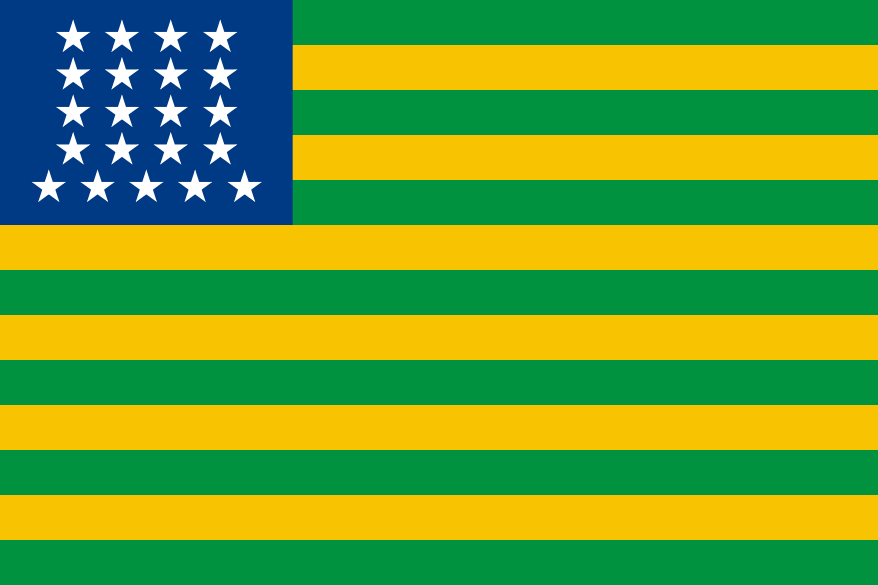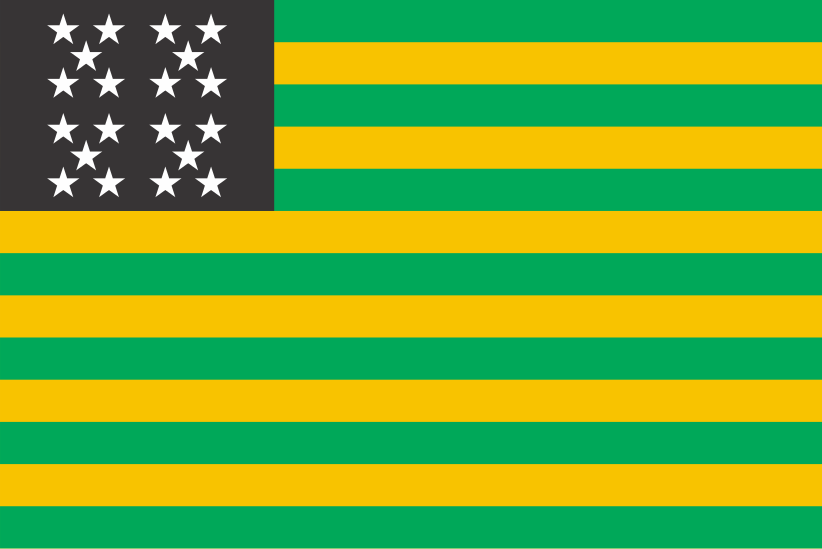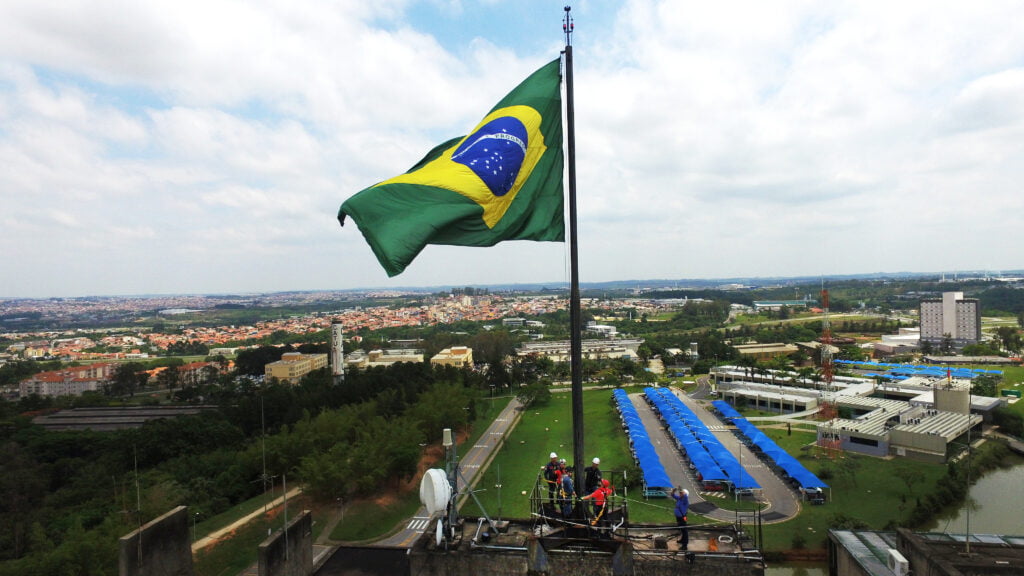How did flag day come about?
Every year, on November 19th, Brazil celebrates Flag Day, a significant date marked by the institution of the republican national flag in 1889. On this day, civic demonstrations and the singing of the Hymn to the Flag are common, symbolizing the importance of this patriotic symbol. The initiative to establish this commemoration was promulgated by decree nº 4, drawn up by Benjamin Constant, member of the provisional government at the time of the Republic.
The history of Brazilian flags
The evolution of Brazilian flags reflects the country's trajectory over the years. From independence to the proclamation of the Republic, different symbols were adopted. We highlight the Flag of the Empire, which incorporated elements representing the houses of Bragança and Habsburg, and the First Republican Flag, created by Ruy Barbosa. These changes, often motivated by international influences, reflect historical periods and dominant ideologies.
Flag of the Empire
The first official flag of Brazil was created after independence in 1822. It featured a yellow rhombus on a green field, incorporating heraldic elements that symbolized the houses of Bragança and Habsburg. The choice of colors and symbols was influenced by several factors, including references to Portuguese imperial heritage.

Republican flags
With the proclamation of the Republic in 1889, several flags were proposed before the current one was adopted. The “United States of Brazil” by Ruy Barbosa, inspired by the American flag, and the Bandeira de Lopes Trovão, which incorporated elements of the imperial flag, stand out. The transition to the current flag, inspired by the imperial one, occurred under the suggestion of Marshal Deodoro, maintaining green and yellow as symbols of the nation's struggles and victories.


Current flag
The current flag of Brazil was created in 1889, shortly after the Proclamation of the Republic, which transformed the country from a monarchy to a republic12. The flag maintained the green and yellow colors of the imperial flag, but replaced the coat of arms with the blue circle with stars and the motto “Order and Progress”.
The stars represent the Brazilian states and the Federal District, and the motto is inspired by the positivist philosophy of Auguste Comte. The current flag has 27 stars, which correspond to the 26 states and the Federal District. The last modification to the flag occurred in 1992, with the inclusion of four new stars
“Love, Order and Progress”?
The motto “Order and Progress” on the Brazilian national flag was inspired by positivist ideals, defended by Auguste Comte, in France. The positivist philosophical current defends knowledge based only on scientific principles. The motto was an adaptation of the phrase: “Love as a principle and Order as a basis”.

Recently, a non-partisan movement called “Love on the Flag” has defended the inclusion of the word “love” in the motto of the Brazilian flag. According to the group, the exclusion of the word “love” directly influences the formation of national values.
They argue that the motto “order and progress” would actually be an incomplete version of the motto “love as a principle, order as a basis and progress as an end”, formulated in the mid-19th century by the French philosopher Augusto Comte, founder of positivism. . However, from a historical point of view, there is no reason to believe that the motto “order and progress” is a mutilated version of the motto containing “love”.
The phrase “love as a principle, order as a basis and progress as an end” first appeared in the philosopher's text in 1848, but it does not yet have the status of a motto. Only in 1851, when positivism itself entered its religious phase, the phrase containing love was converted into a motto
How to fold the flag
Folding the national flag is a ceremonial and respectful act. After the ceremonies, the flag must be folded in a specific way. The step-by-step is:
- Hold by the gear and the lais, it folds in half in its direction
longitudinal, with the part where the isolated star appears downwards
Spica (Alfa da Virgem – Pará) and the part of the couplet “ORDER AND PROGRESS”; - Still held by junk and lais, it is, for the second time,
folded in half, again in its longitudinal direction, with the part where the tip of one of the obtuse angles of the yellow diamond appears facing upwards; the side on which the badge appears must face the front of the graduation; - It is then folded in its transverse direction, into three parts,
the stuff and the wool touching the cloth, from the bottom, approximately in the position corresponding to the opposite ends of the blue circle; the part where the isolated star and the couplet appear remains facing upwards and forwards; - At the end of dubbing, the National Flag presents the largest
part of the couplet upwards and is passed to the flexed arm of the oldest, this being the position for transportation; - For the guard, one more fold can be made in the direction
longitudinally, with the blue field facing upwards.
References
In the beginning was it love? – Cult Magazine (uol.com.br)
manual-bandeiras-05-2015-pdf.pdf (windows.net)
Discover the history and meanings of the Brazilian flag – Jornal da USP
Discover the relationship between the stars and the States in the Flag (usp.br)




